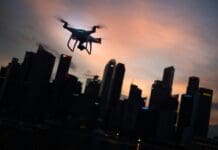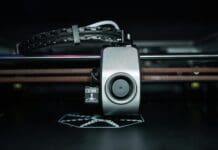This post is also available in:
 עברית (Hebrew)
עברית (Hebrew)
Most robots are wheeled or tracked, because of the difficulties and expenses entailed in getting robot legs to animate properly. However, a new medium-sized quadruped robot is able to scale fences, manipulate door handles, turn back flips, climb stairs and jump up and down while keeping its balance.
The Minitaur robot developed by the start-up Ghost Robotics could carry payloads to monitor public safety; it could be used to survey terrain for mining, exploration or field survey; it could be used by the military during delicate operations; or to provide support in medical emergencies and to help monitor crops for farmers.
This low cost (Minitaur currently retails for $10,000) legged robot can be used in the field as a 24/7 mobile sensor platform for search and rescue operations, military applications and even space exploration.
According to UASVision, the most impressive feature of the Minitaur robot is that it is able to autonomously decide to jump up into a handstand on its front two legs, perceive where a handle is on a door, take another jump up to the door and prepare to retract one of its legs at just the right moment in order to manipulate the handle to open.
According to Ghost’s website, the robot’s specialized leg design let this machine run and jump over difficult terrain. High-speed and high-resolution encoders let the machine see the ground through the motors and adapt faster than the blink of an eye.
The robot weighs just over 5kg and can carry a payload of over 3kg.
It can be driven around by joystick out of the box, using different gaits. Its 2DOF legs are good for more than just running. They can sense and exert precise forces, and do basic manipulation. Minitaur is the first direct-drive legged robot using conventional rotary electric motors.
The four 2DOF legs can be programmed with a wide variety of gaits (including bounding, pronking, walking, and trotting) to explore the tradeoffs of efficiency and power at various speeds and with different payloads. The movements have been inspired by different animals and how their gaits change when they approach a range of obstacles.


























